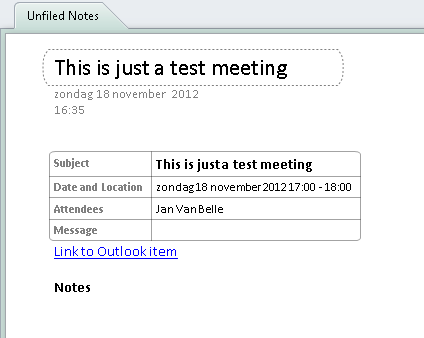
Wouldn't it make more sense for the search bar to be accessible from OneNote's home screen? Next to the full-screen button is a search button that searches for your keyword in the title or anywhere on the page, though you have to be viewing a notebook in order to see the search bar to search all notebooks. The previous version was plain text only.

Also, Microsoft Office users will find a familiar ribbon across the top of the screen, which offers a host of rich-formatting options. Need more room to operate? Then tap the arrows in the upper-right corner to go full-screen. Now, the page you are working on is given more room on the screen, with the navigation panel more narrow and moved to the right edge of the screen.

The previous skeuomorphic design that mimicked a spiral notebook has been replaced.

Until this basic functionality is offered in OneNote, iPad users are better off paying for the $14.99 Outline+ app. And on existing notebooks, you can't even add a new section you can only add new pages to an existing section in an existing notebook. You can edit OneNote notebooks that you've created on a Windows PC or tablet until your heart's content, but you can't create new notebooks with the iPad app. The updated app offers a boatload of improvements, though it still holds onto one limitation that makes the iPad users feel like second-class citizens to their Windows brethren.Īnd what is this egregious limitation to which I refer? Why, it's the simple task of creating a new notebook or even a new section. The OneNote iPad app was so severely limited that only the most ardent OneNote users could find it useful. When we last saw OneNote for the iPad, we felt that as though Microsoft released its venerable note-taking app for its chief rival's device against its own will.


 0 kommentar(er)
0 kommentar(er)
